Last Updated on March 5, 2024 by teamobn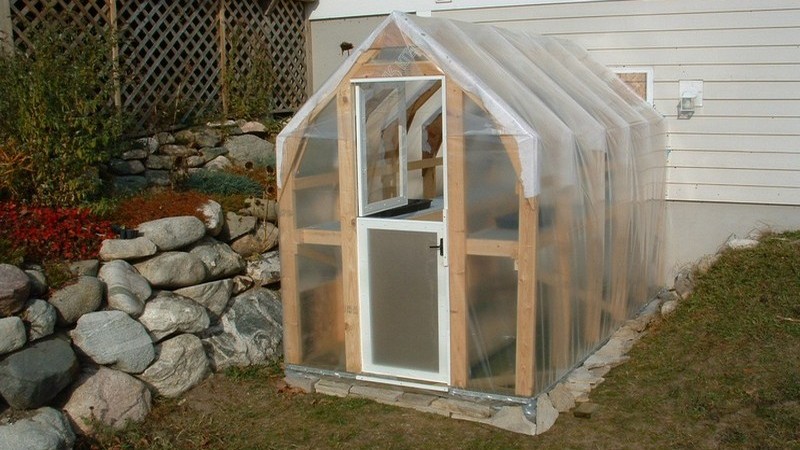
Whether you want to start seedlings, grow exotic plants, or raise your own vegetables, a greenhouse is the best way to get outstanding results. It allows you to create an environment where you can grow plants that require specific temperatures, soil types, or growing conditions.
You can choose from a wide range of types, from small tabletop models to large walk-in types that can cover an entire backyard.
For many people, spending time in their greenhouse also provides a welcome respite from the chaos of the day.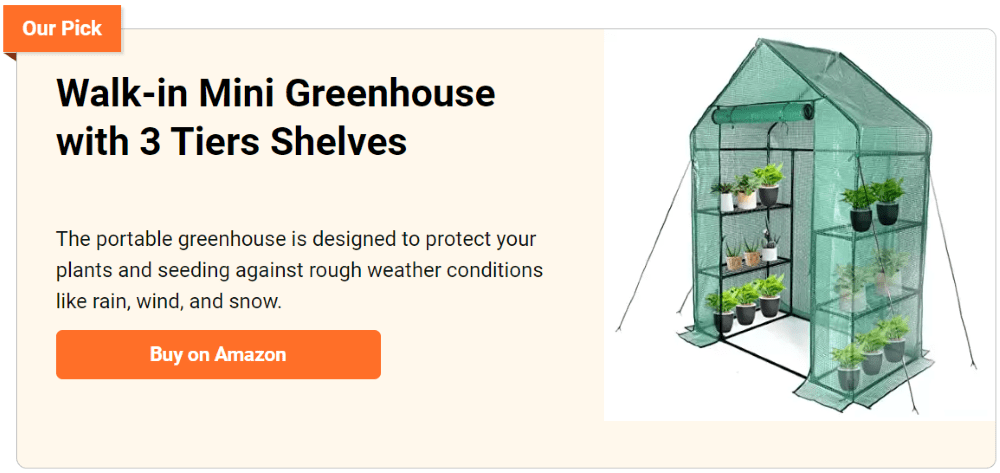
One of the best, and most low-cost, ways to extend the growing season and grow fresh food in the winter is to build a greenhouse.
Greenhouses can be expensive to buy and might not even fit your needs. To save some money, you can create one out of recycled materials, such as pallets, plastic bottles, and PVC pipes.
By building your own greenhouse you can get all the features you need. The cost is less as you don’t have to pay a contractor to build it for you. If you’re resourceful enough and gather recycled materials, you’ll save more money.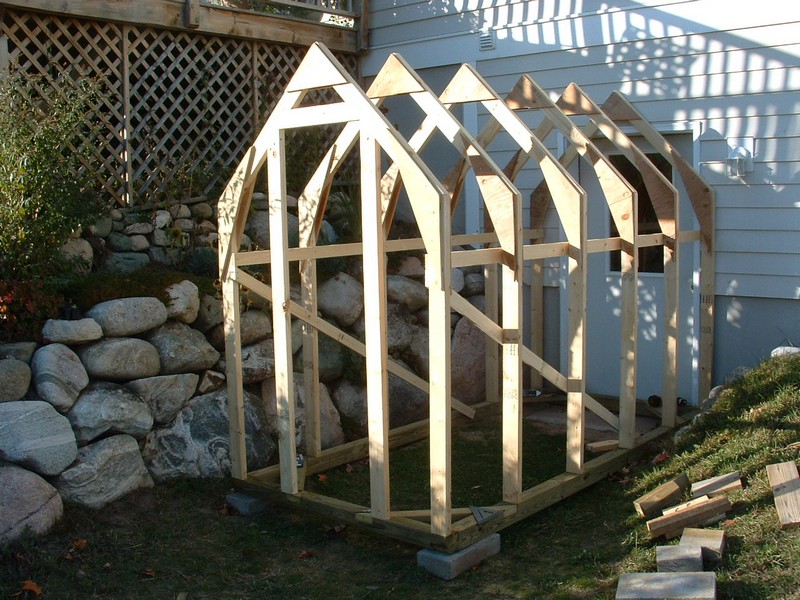
This homemade greenhouse is perfect for those of you who are new to DIY projects. It’s very easy to build, inexpensive, and easy to install. And if you choose to relocate or dismantle it when not in use, it’s easy to do.
Materials:
- Pressure-treated 4×4 Timber
- 2×4 Timber
- 1×3 Timber
- Plywood
- Nails
- 6 mil Greenhouse Film
- Wiggle Wire
- Sill Seal Foam
- Felt Tape (or any material to protect the plastic from abrasion against timber)
- Galvanized Metal Lath
Tools:
- Saw
- Nailer Gun
- Staple Gun
- Wire Cutter
- Level Bar
How to Build Your Own Greenhouse
If you decide to build your own greenhouse, you will be needing some tools and basic woodworking knowledge. But if you’re ready, common let’s get started!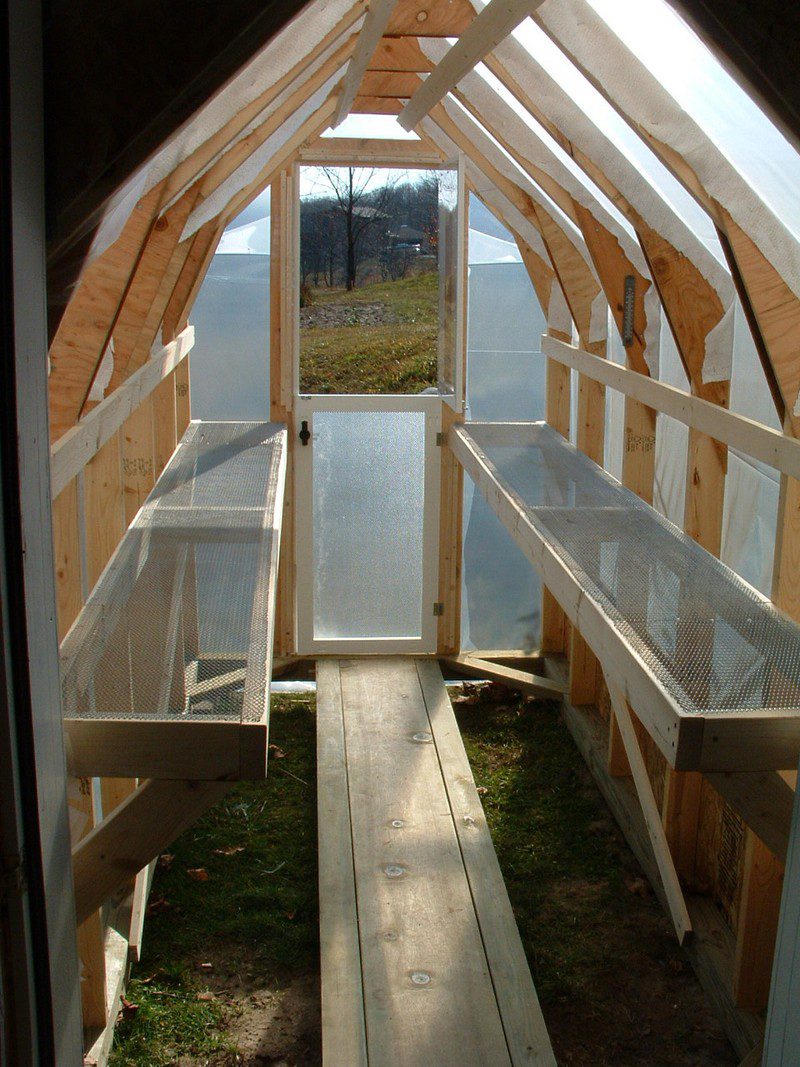
Finding the right spot
A greenhouse is something that is going to be around for a while. Even if you don’t use it frequently, it will be a great asset during the winter months, when you need to grow your favorite herbs, flowers, and fruits.
However, finding a good spot to build one shouldn’t be done in haste.
1. Finding the right spot in your backyard where your it will be located is the first thing you should consider. 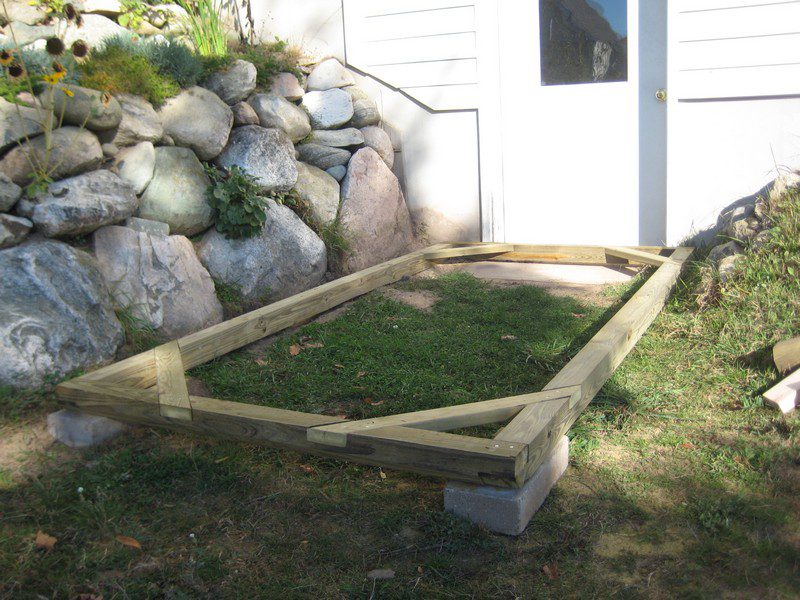
Templates and Parts
2. After deciding where your project will be located, you may start cutting the timber to prepare for the parts of your project. The 4×4 Pressure-treated timber will be used as the base. Depending on how wide or how big you want it, the base (4×4) should be cut accordingly.
3. You can start cutting the parts for the frame, again, depending on how huge or small you want your project to be and the number of frames will be building. It is easier to cut the proportioned part of the frames if you create a template for each part.
After cutting all the parts of the frame, start assembling the frames. In this particular project, there are 6 identical frames used. 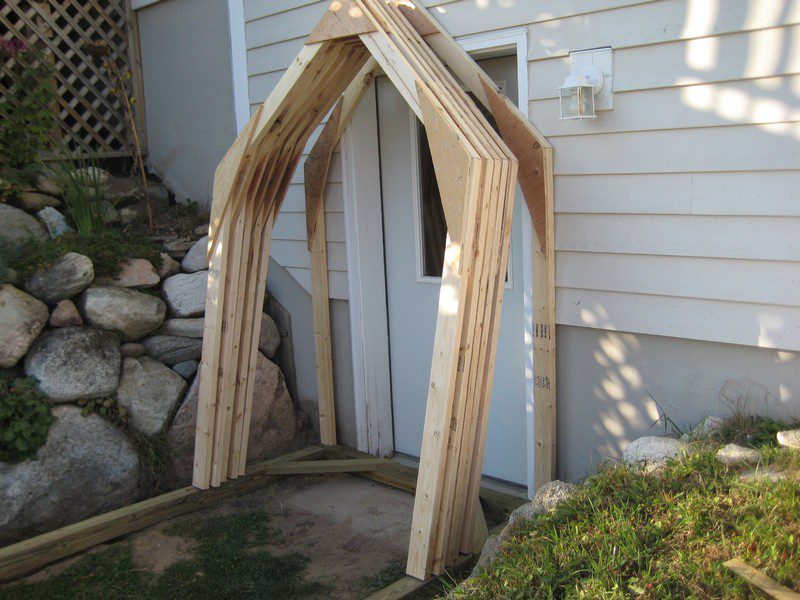
The Process
4. Build the base, to ensure that it is properly level, use a level bar.
5. Attach the frames. you can use 1.5 feet to 2 feet distance from each of the frames.
6. Secure the frames with a batten to make sure it is sturdy.
7. Add the wooden shelves on both sides of your frames where you can put your seedlings and other special plants
8. Using a staple gun, cover it with film, and make sure to attach felt tape or any material to protect the plastic from abrasion against timber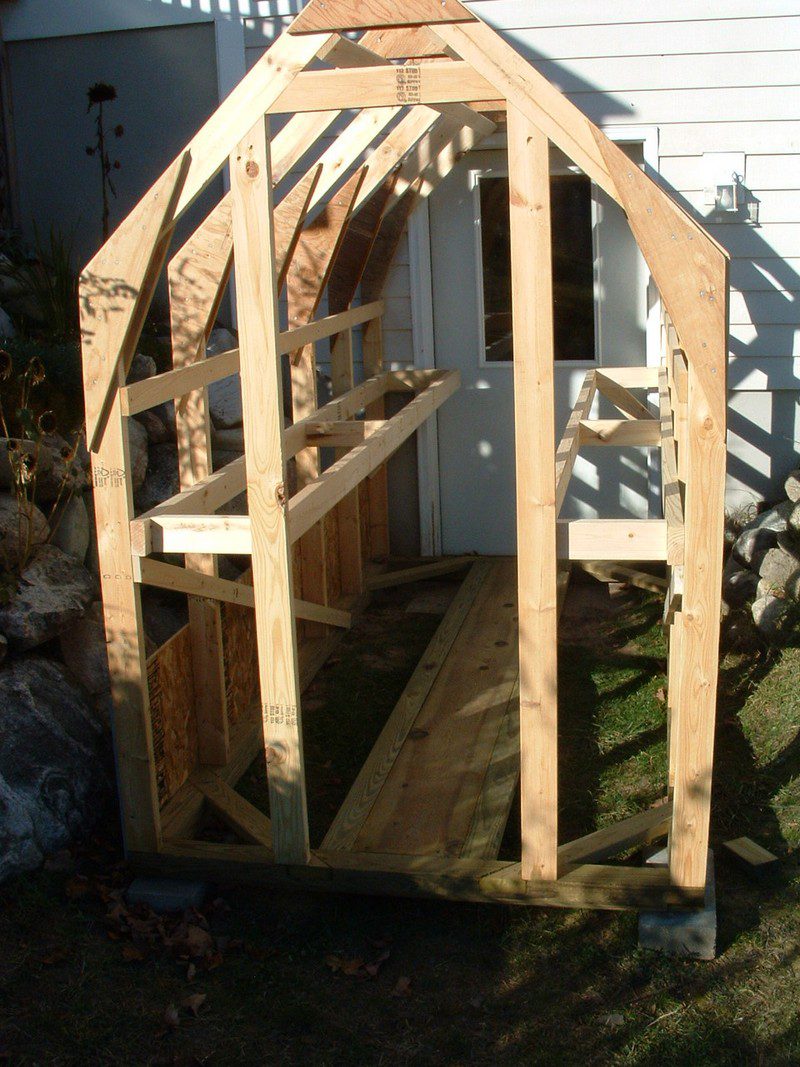
You may customize the number of shelves you want to put inside your project. This will also give you a lot of storage for your seedlings and plants. You can even add tools storage for your gardening tools. You won’t only have a good house for your plants, but also cool tools storage.
Do you have suggestions on how this design can be improved?
Click on any image to start the lightbox display. Use your Esc key to close the lightbox. You can also view the images as a slideshow if you prefer 😎



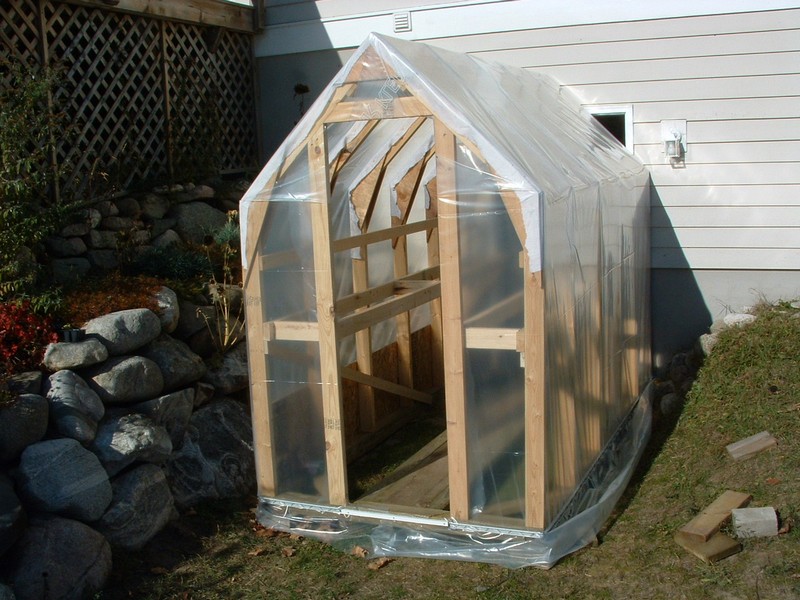
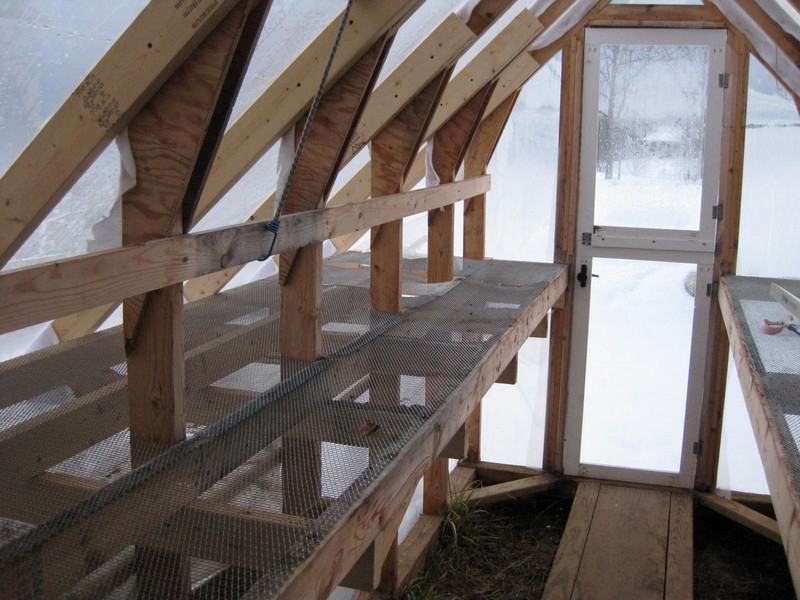

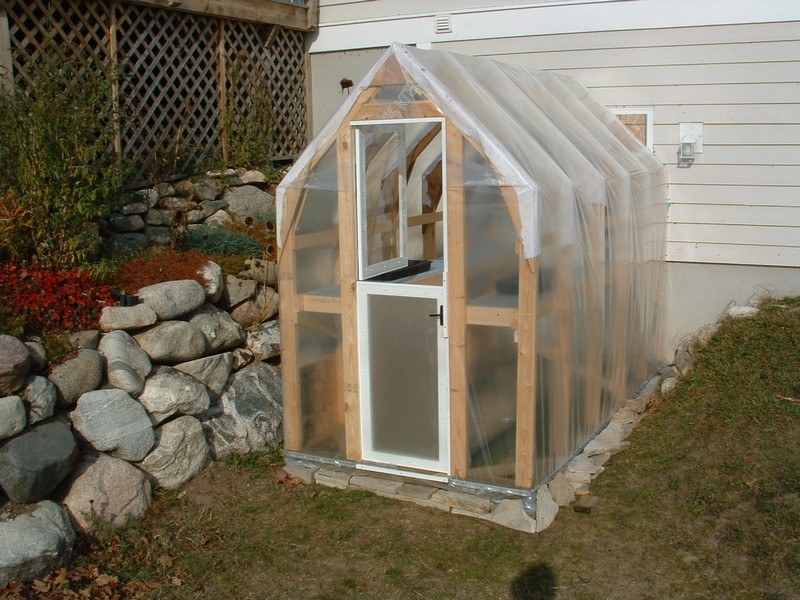
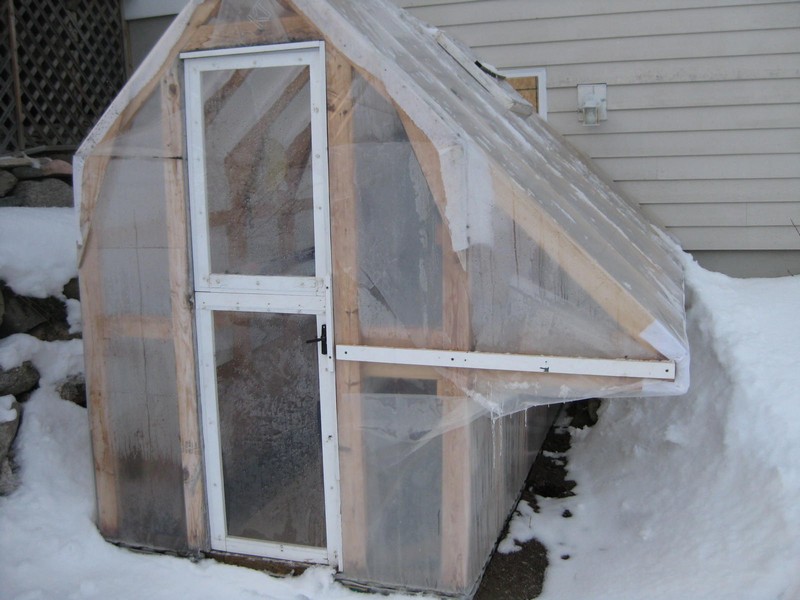
Thanks to Thin Man’s Blog for this great project. You can get step-by-step instructions here…
If you liked this project, you will also like viewing these gardening ideas…
Pro tips can significantly enhance your experience with a homemade greenhouse. Here are some valuable insights to help you make the most of your it:
1. Choose the Right Location: Select a location that receives ample sunlight throughout the day, ideally facing south to maximize sun exposure. Ensure the site is sheltered from strong winds and has good drainage to prevent waterlogging.
2. Invest in Quality Materials: Opt for durable materials such as pressure-treated lumber, UV-resistant plastic, and corrosion-resistant fasteners. Quality materials will ensure the longevity and structural integrity of your structure.
3. Plan for Ventilation: Proper ventilation is essential for regulating temperature and humidity levels inside. Install vents, louvres, or fans to promote air circulation and prevent heat buildup, especially during the warmer months.
4. Monitor Environmental Conditions: Regularly monitor temperature, humidity, and light levels inside. Use thermometers, hygrometers, and light meters to track these factors and make adjustments as needed to create optimal growing conditions for your plants.
5. Optimize Space Efficiency: Maximize space inside by utilizing vertical shelving, hanging baskets, and trellises. Plan your layout carefully to ensure efficient use of space and easy access to plants and gardening supplies.
6. Practice Water Conservation: Implement water-saving techniques such as drip irrigation, mulching, and rainwater harvesting to conserve water and promote efficient irrigation. Avoid overwatering plants, as excess moisture can lead to root rot and other problems.
7. Implement Pest Management Strategies: Prevent pest infestations and disease outbreaks by practising integrated pest management (IPM) techniques. Monitor plants regularly for signs of pests and diseases, and use biological controls, cultural practices, and organic pesticides to manage problems effectively.
8. Maintain Regularly: Dedicate time to regular maintenance tasks to keep it in top condition. Clean the interior and exterior regularly, inspect for signs of damage or wear, and perform routine maintenance on ventilation systems, heating equipment, and other components.
9. Experiment and Learn: Greenhouse gardening is a continuous learning process, so don’t be afraid to experiment with different plants, growing techniques, and environmental controls. Keep a gardening journal to track your progress and learn from your successes and failures.
10. Enjoy the Process: Most importantly, enjoy the process of gardening! Embrace the opportunity to nurture plants in a controlled environment and take pride in the beauty and abundance that they bring to your home and garden.
By following these pro tips, you can create a successful and rewarding gardening experience that yields healthy plants and bountiful harvests year-round. Happy gardening!
Building a homemade greenhouse offers numerous advantages for gardening enthusiasts, providing a controlled environment for cultivating plants and extending the growing season. In this comprehensive guide, we’ll explore the benefits of creating your own greenhouse in seven easy steps, as well as discuss essential maintenance practices to ensure its longevity and effectiveness.
Advantages of Homemade Greenhouse
1. Year-Round Gardening
Perhaps the most significant advantage of having a homemade greenhouse is the ability to garden year-round. By controlling the temperature, humidity, and light levels within, you can create an ideal environment for growing a wide variety of plants regardless of the season.
2. Extended Growing Season
A greenhouse allows you to start planting earlier in the spring and continue growing later into the fall, effectively extending the growing season beyond what is possible in an outdoor garden. This means you can enjoy fresh produce for a more extended period and even experiment with growing plants that are typically not suited to your climate.
3. Protection from Weather Elements
A greenhouse protects from adverse weather conditions such as frost, hail, wind, and heavy rain, which can damage or destroy crops grown in an outdoor garden. This protection ensures that your plants remain healthy and productive, even during unpredictable weather events.
4. Pest and Disease Control
With proper ventilation and screening, a greenhouse can effectively keep pests such as insects, birds, and rodents at bay, reducing the risk of infestations and crop damage. Additionally, the controlled environment helps prevent the spread of plant diseases, resulting in healthier and more robust plants.
5. Optimized Growing Conditions
In a greenhouse, you have full control over key environmental factors such as temperature, humidity, light intensity, and air circulation. This allows you to create optimal growing conditions tailored to the specific needs of your plants, resulting in faster growth, higher yields, and better overall quality.
6. Versatility and Flexibility
A homemade greenhouse offers endless possibilities for customization and adaptation to suit your gardening preferences and space constraints. Whether you’re interested in traditional soil-based gardening, hydroponics, or container gardening, a greenhouse provides the perfect environment to experiment and innovate.
7. Eco-Friendly Gardening
By growing your own produce in a greenhouse, you can reduce your carbon footprint and minimize the environmental impact associated with commercial agriculture, such as long-distance transportation and excessive pesticide use. Additionally, greenhouse gardening allows you to practice sustainable gardening techniques such as composting, water conservation, and organic pest control.
Maintenance of Homemade Greenhouse:
1. Regular Cleaning
Keep the greenhouse clean by removing debris, weeds, and fallen leaves regularly. Wash the covering material periodically to remove dirt, dust, and algae buildup, which can reduce light transmission and inhibit plant growth.
2. Monitor Environmental Conditions
Monitor temperature, humidity, and light levels inside the greenhouse regularly using a thermometer, hygrometer, and light meter. Adjust ventilation, heating, and shading as needed to maintain optimal growing conditions for your plants.
3. Watering and Fertilizing
Water your plants consistently to ensure they receive an adequate supply of moisture, taking care not to overwater or underwater. Additionally, fertilize your plants as needed to provide essential nutrients for healthy growth and development.
4. Pest and Disease Management
Keep an eye out for signs of pests or diseases in your greenhouse and take prompt action to address any issues. Practice integrated pest management techniques such as biological controls, mechanical traps, and organic pesticides to minimize the use of chemical treatments.
5. Structural Maintenance
Inspect the greenhouse structure regularly for signs of wear and tear, such as loose fasteners, damaged coverings, or sagging frames. Repair any damage promptly to prevent further deterioration and ensure the structural integrity of the greenhouse.
6. Seasonal Maintenance
Perform seasonal maintenance tasks such as cleaning gutters, pruning overgrown plants, and replacing worn-out components before the start of each growing season. This ensures that your greenhouse is ready to provide optimal growing conditions for your plants year-round.
7. Optimize Energy Efficiency
Take steps to improve the energy efficiency of your greenhouse, such as adding insulation, sealing drafts, and installing energy-efficient heating and lighting systems. This can help reduce energy costs and minimize environmental impact while maintaining comfortable growing conditions for your plants.
Building a homemade greenhouse offers numerous advantages for gardening enthusiasts, including year-round gardening, extended growing seasons, weather protection, pest and disease control, optimized growing conditions, versatility, and eco-friendliness.
By following these seven easy steps to construct a greenhouse and implementing proper maintenance practices, you can enjoy the benefits of greenhouse gardening and cultivate healthy, vibrant plants throughout the year.
As we conclude our comprehensive guide to building a homemade greenhouse in seven easy steps, let’s reflect on the benefits of greenhouse gardening and address some common questions that may arise during the process.
The Wrap Up
Constructing a homemade greenhouse offers a plethora of advantages for gardeners of all skill levels, providing a controlled environment for cultivating plants and extending the growing season. By following the seven easy steps outlined in this guide and implementing proper maintenance practices, you can enjoy the benefits of greenhouse gardening year-round.
A homemade greenhouse allows you to garden year-round, regardless of the season, by providing a controlled environment for optimal plant growth. With a greenhouse, you can start planting earlier in the spring and continue growing later into the fall, effectively extending the growing season and maximizing your harvest.
A greenhouse protects from adverse weather conditions such as frost, hail, wind, and heavy rain, ensuring that your plants remain healthy and productive. By controlling the environment within the greenhouse, you can effectively keep pests and diseases at bay, resulting in healthier and more robust plants.
With full control over key environmental factors such as temperature, humidity, light intensity, and air circulation, you can create optimal growing conditions tailored to the specific needs of your plants. A homemade greenhouse offers endless possibilities for customization and adaptation to suit your gardening preferences and space constraints, allowing you to experiment with different growing techniques and plant varieties.
Greenhouse gardening allows you to reduce your carbon footprint and minimize environmental impact by practising sustainable gardening techniques such as composting, water conservation, and organic pest control.
By building and maintaining a homemade greenhouse, you can enjoy a bountiful harvest of fresh, healthy produce year-round while minimizing the challenges and limitations of traditional outdoor gardening. Whether you’re a seasoned gardener or just starting out, greenhouse gardening offers an exciting and rewarding way to connect with nature and cultivate your own food.
Frequently Asked Questions
1. How much does it cost to build a homemade greenhouse?
The cost of building a homemade greenhouse can vary depending on factors such as size, materials, and complexity of the design. A simple hoop house or cold frame can be constructed for a few hundred dollars, while a more elaborate structure made from wood or metal may cost several thousand dollars.
However, by using recycled materials, DIY techniques, and careful planning, you can build a greenhouse that fits your budget and gardening needs.
2. Do you need a building permit to construct a greenhouse?
The need for a building permit to construct a greenhouse depends on local building codes and regulations. In some areas, small temporary structures such as hoop houses or cold frames may not require a permit, while larger permanent structures may require approval from local authorities.
It’s essential to check with your local zoning office or building department before starting construction to ensure compliance with applicable regulations.
3. What is the best location for a greenhouse?
The best location for a greenhouse is one that receives ample sunlight throughout the day and is protected from strong winds and other adverse weather conditions. Ideally, the greenhouse should be positioned facing south to maximize sun exposure, with good drainage and access to water sources.
It’s also essential to consider factors such as proximity to existing structures, landscape features, and potential obstructions that may affect the greenhouse’s performance.
4. How do you maintain temperature and humidity levels in the greenhouse?
Maintaining temperature and humidity levels in the greenhouse requires careful monitoring and control of environmental conditions. Ventilation systems such as windows, vents, and fans can help regulate temperature and humidity by allowing fresh air to circulate and excess heat to escape.
Additionally, shading systems, insulation, and heating devices can be used to adjust temperature levels as needed, ensuring optimal growing conditions for your plants.
5. What types of plants can you grow in a greenhouse?
A greenhouse provides a versatile environment for growing a wide variety of plants, including vegetables, fruits, herbs, flowers, and ornamental plants. Depending on your climate and growing preferences, you can cultivate both warm-season and cool-season crops, as well as exotic or specialty plants that may not thrive in outdoor conditions.
With proper care and maintenance, the possibilities are endless for greenhouse gardening.
6. How do you prevent pests and diseases in the greenhouse?
Preventing pests and diseases in the greenhouse requires a proactive approach to sanitation, hygiene, and plant care. Start by keeping the greenhouse clean and free of debris, weeds, and fallen leaves, which can harbour pests and pathogens.
Inspect plants regularly for signs of pests or diseases, and take prompt action to address any issues using integrated pest management techniques such as biological controls, mechanical traps, and organic pesticides. Additionally, practice good hygiene by washing hands and tools before handling plants to prevent the spread of diseases.
7. What maintenance tasks are required to keep the greenhouse in good condition?
Maintaining a homemade greenhouse involves regular cleaning, monitoring, and upkeep to ensure its longevity and effectiveness. This includes tasks such as cleaning the covering material, monitoring environmental conditions, watering and fertilizing plants, managing pests and diseases, inspecting structural integrity, and performing seasonal maintenance before the start of each growing season.
By staying proactive and attentive to the needs of your greenhouse, you can enjoy years of successful gardening and abundant harvests.







